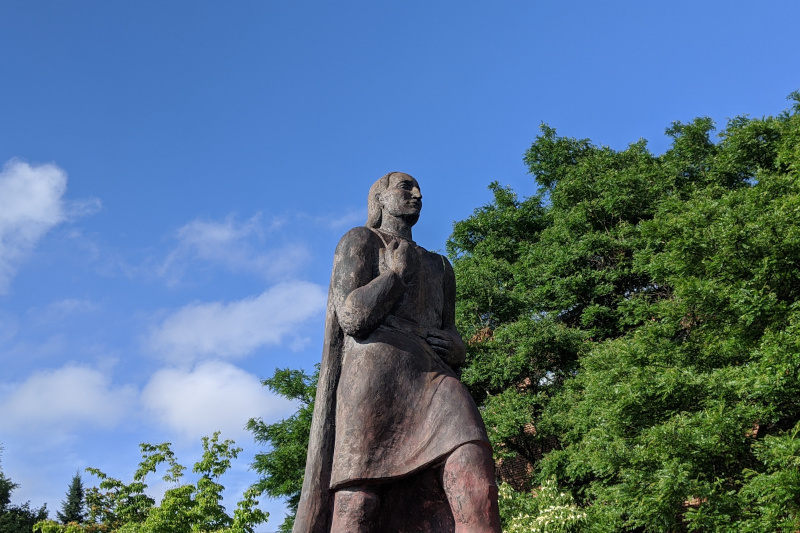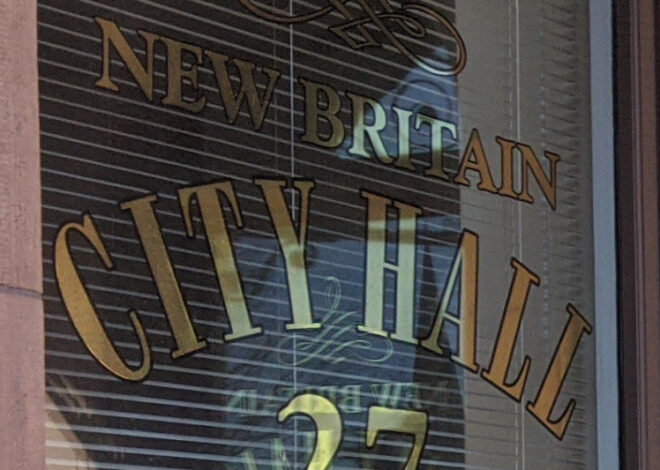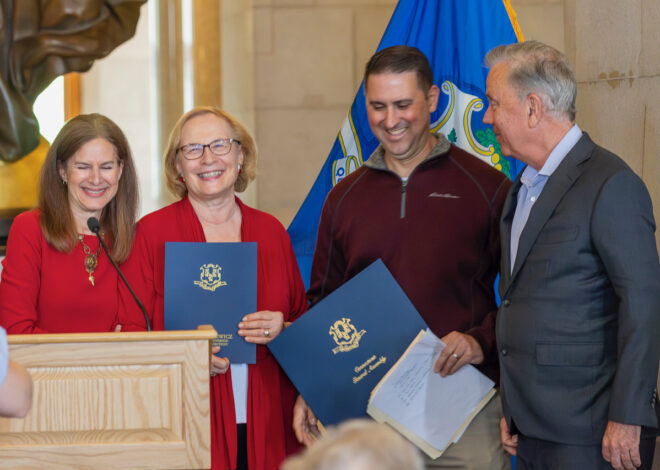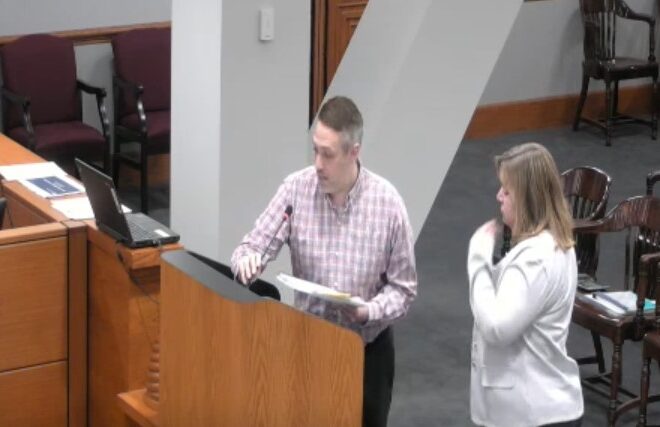The question of whether to remove the monument to Christopher Columbus is returning to the City Council for possible final action.
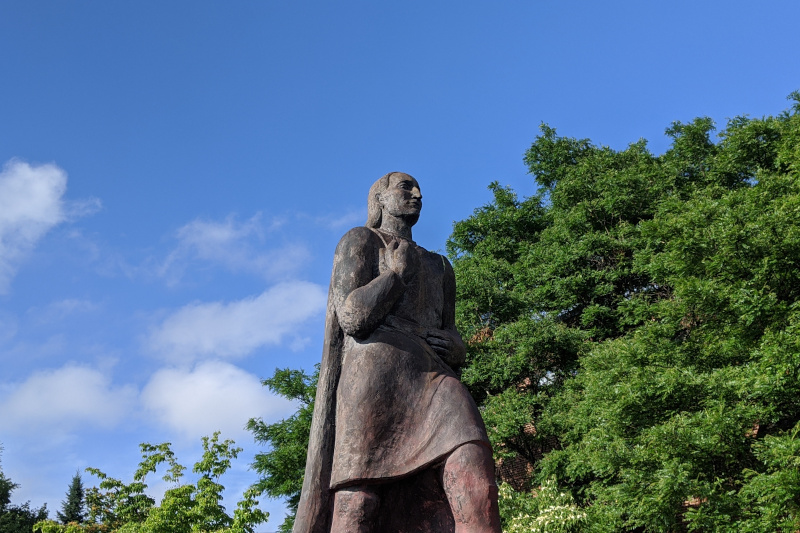
In a report it has submitted to the Council, the City Plan Commission, while saying that it, “is reticent to offer any opinion,” on removing the statue, notes that,
it is recommended that the City make arrangements for the General Ameglio Society, or a similar local fraternal organization, to take ownership of the monument and allow for its removal and relocation to their property.
The Commission noted that it, “has been made aware there is the possibility that the General Ameglio Society may be agreeable to taking ownership of the monument.”
While saying that it was not offering a recommendation, the Commission opined that the Council has three options. One would include keeping the statue as is, which the Commission said, “may be interpreted,” as, “tacitly condoning,” Columbus’s history. The second would involve keeping the statue, but adding a plaque, “contextualizing the monument and giving a more expansive, and balanced account of Columbus’s history.” The third option would be removing the statue and relocating it to an, “Italian fraternal organization or similar place.”
The Commission report was in response to a Council petition, submitted by two Council members, Ald. Colin Osborn (D-2) and Ald. Chris Anderson (D-AL), on July 8, 2020, which called on,
the City Plan Commission to please submit a report to the Common Council for the removal of the Christopher Columbus statue at McCabe Park located at the corner of Main Street and North Street.
The Commission’s report is on the agenda of the September 23, 2020 Council meeting.
The New Britain Racial Justice Coalition, which has been pressing for removal of the statue, said online that, “After months of organizing, the fate of the Columbus Statue is coming to a final vote.”
The group has protested against the statue and has been pressing the Council and City Plan Commission for action on its removal. The Coalition is now asking members of the public to comment at the September 23rd meeting in favor of final Council action to remove the statue.
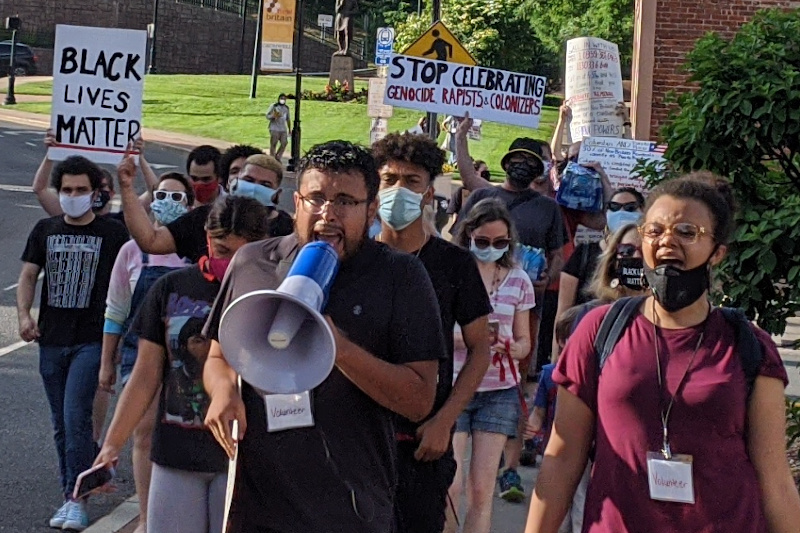
At the same time protests were taking place against the Columbus statue this summer, the Board of Education voted to change the Columbus Day to Indigenous People Day in the school calendar, saying,
In this time of increased awareness and in alignment with district priorities that include using an equity lens and anti-racism in all aspects of our practice, it behooves the New Britain Board of Education and the CSDNB to acknowledge that Black, Brown, Indigenous, and People of Color (BBIPOC) still suffer from the ramifications of the colonial oppression that ensued at the hands of European explorers like Columbus.
“We have a responsibility,” says the new policy, “to reframe Euro-centric history by centering the experiences of the Indigenous Peoples in the United States and internationally – many of whom still struggle with income inequality, sovereignty, and equity in having their basic needs met in the health, education, and other sectors.”
The City Plan, discussing the installation of the statue in 1941, said that,
at the turn of the 20th century, Italian-Americans, like many other immigrant groups to this country, were part of a marginalized community that suffered discrimination and economic hardship. They celebrated Christopher Columbus, a recognized American hero at the time, as a means of celebrating their own heritage and national pride…
But, with nationwide protests against racism and inequality including a focus on bringing down symbols of racism and colonialism, renewed attention to accounts from a priest, Bartolome de las Casas, and others, telling about enslavement, murder, rape and other brutality upon native peoples under Columbus’ conquests have led to successful calls for statues of him being removed in some cities.
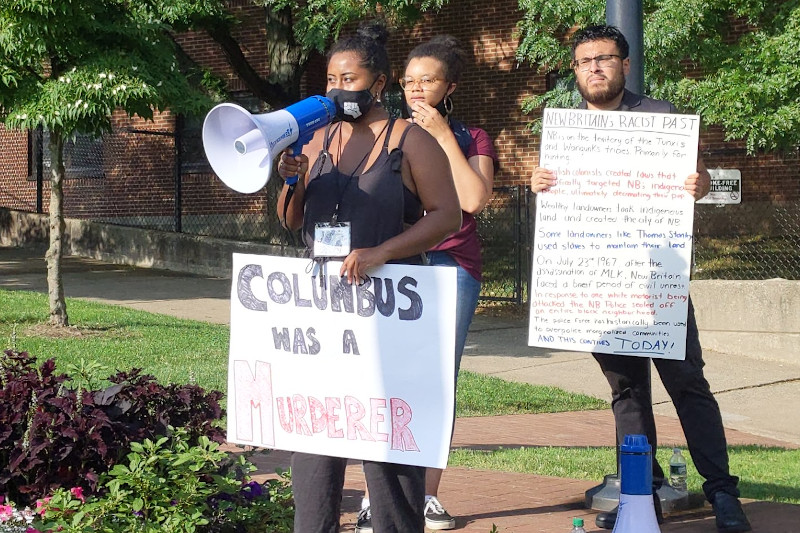
New Britain NAACP President Ronald P. Davis commented in July that,
Although Christopher Columbus is remembered as a ground-breaking explorer, we must remember his actions led to the transatlantic slave trade and the mass killing and exploitation of indigenous people. He is the cornerstone of ‘Institutional Racism’ in America.
“As a community, we cannot continue to praise a man who stole land and continually chose to dehumanize native people,” Davis said in his July comments, “Why should we have a statue, or a street dedicated to anyone who stands as a symbol for the violence?”
There have been defenders of the statue, however. On August 12, 2020, a number of people spoke at the Council meeting in favor of the statue, protesting its removal.
But that protest drew strongly worded rebukes from community leaders about racist comments made as part of the arguments against removing the statue. “I, a black man,” Ald. Osborn had commented, “sat in my seat for over 90 minutes to be told by a large group of people that those of us who are in protest against systemic and societal racism, classism, colonialism and institutionalized enslavement must ‘get over it’.”
“We were called mobsters (a reference made against black and brown people),” said Ald. Osborn, “and it was even suggested that we (who are in support of the monument being removed) should get beat up. As a caller said, ‘maybe that is what THEY need’.”
The Council’s announcement of its September 23, 2020 meeting says that,
Due to current public health concerns, this meeting will not be open to the public. Members of the public may view a live broadcast of the meeting online via the livestream link: http://www.newbritainct.gov/meetings
Individuals seeking public participation may join the queue beginning at 6:45 pm by calling 1 (609) 663-5783.
Public participation for the Council meeting starts at 7:00pm.

